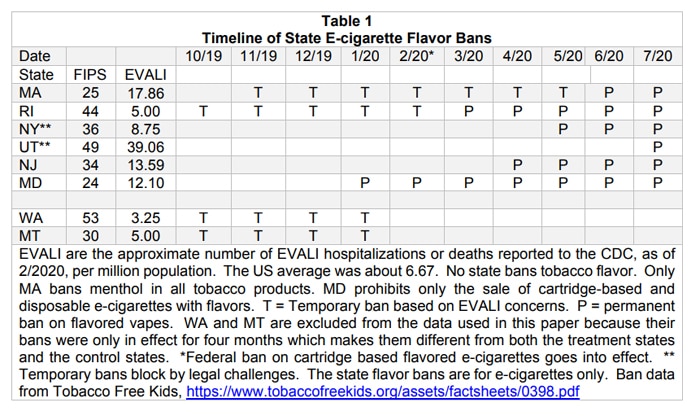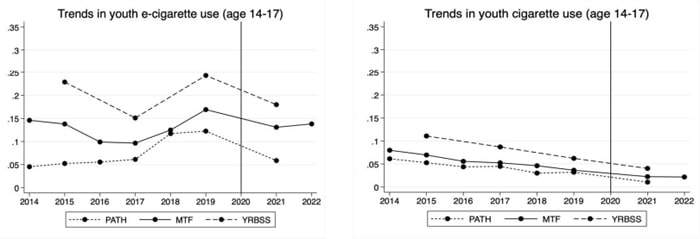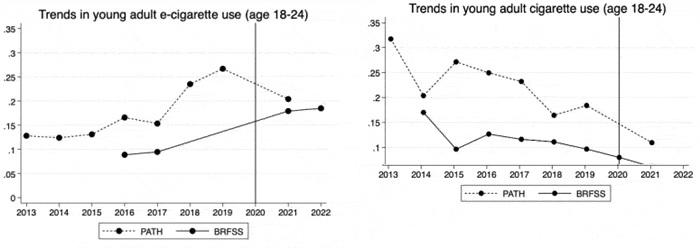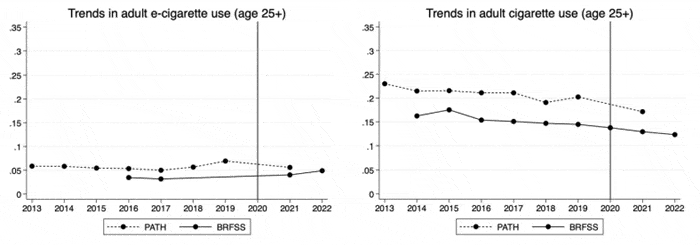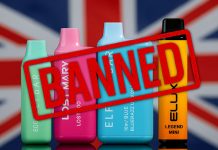A study published in June 2024 examined whether flavour restrictions on vapes impact smoking or youth vaping rates.
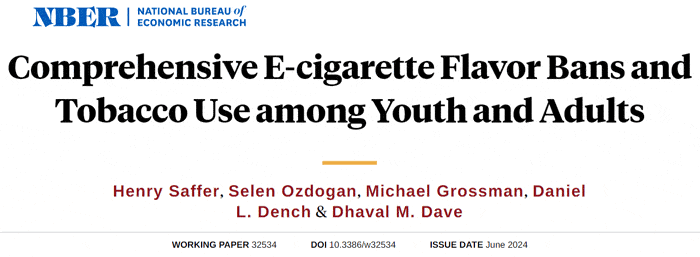
You can read more about it here or download the full PDF report here.
Comprehensive E-cigarette Flavour Bans and Tobacco Use among Youth and Adults
The study was conducted by the NBER (National Bureau of Economic Research) in Massachusetts USA.
Flavour bans were implemented in some USA states to try and halt the rise of youth vaping.
The aim of the study was to examine the impact of vape flavour bans on vaping and smoking rates.
Aim
There were 8 states in the USA which introduced sweeping Temporary (T) or Permanent (P) restrictions on flavoured vaping products between October 2019 and July 2020.
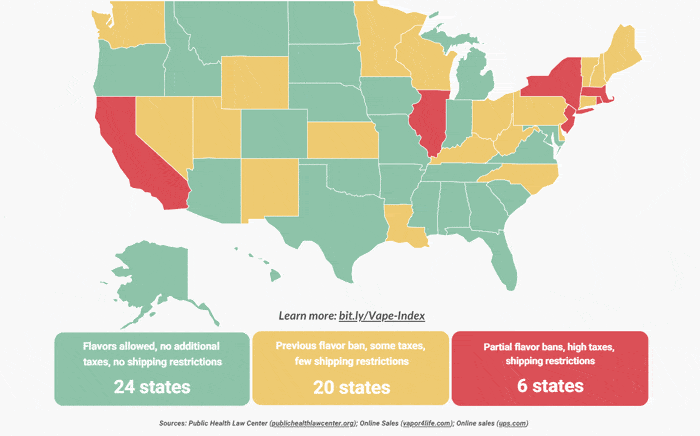
Also some localities without state restrictions enacted their own regulations – but these are not included in the study as banned items could easily cross borders for purchase.
When the EVALI epidemic occurred there was a knee-jerk reaction where states enacted more permanent bans. Unfortunately it has since been found that EVALI was not related to nicotine vaping but to a rogue ingredient (Vitamin E) found in THC (Cannabis) style vaping products.
The states with bans on vape flavours were…
- Rhode Island (RI)
- Massachusetts (MA) – initially allowed Menthol flavours until a later ban
- New York (NY)
- Utah (UH)
- New Jersey (NJ)
- Maryland (MD)
- Montana (MT) – temporary ban – expired in January 2020
- Washington State (WA) – temporary ban – expired in January 2020
Method
Data was taken from the PATH (Population Assessment of Tobacco & Health) study regarding the % of nicotine vapers who used banned flavours across three age groups.
Also further data was taken from the Youth Risk Behaviour Survey (YRBS), Monitoring The Future (MTF) and the Behaviour Risk Factor Surveillance Survey (BRFSS).
The three age groups analysed were:
- Youth / Adolescents (14-17 years old)
- Young adults (18-24)
- Adults (25+)
Results
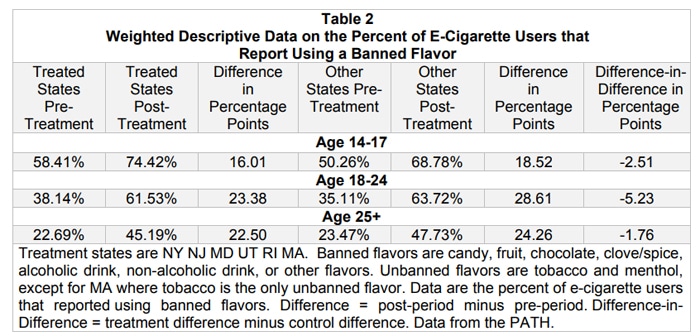
The results are compared with states which did not issue flavour bans.
The study found the following in the different age groups:
Youth / Adolescents
The comparison of numbers of those vaping pre and post flavour bans showed there was a small decrease in the use of banned flavours in between ban and non ban states. However there was little evidence to show reduction in overall e-cigarette use.
The flavours which were banned were found to be most popular in this age group prior to the ban.
Another interesting finding was that there was some substitution for tobacco when the flavour bans were enacted – around 1.7 to 2.6% started smoking.
Young Adults
Here the difference in vaping rates between pre and post flavour ban periods was slightly higher with a 5.2% reduction between ban and non ban states.
Sadly in this instance this reduction meant that smoking rates increased.
Adults
In this age group the bans had little impact on vaping or smoking rates with a difference of only 1.7% in both ban and non ban states.
All Age Groups
The study found that declines in the use of the banned flavours for Youth and Adults is very minimal. There was a larger decline in Young Adults in ban states using banned flavours by 5.2% compared with non ban states.
Also the fact that some stores are permitted to sell banned flavours or users can add their own flavours meaning they still have access to flavours which have been banned. Plus there were “Black Market” forces in play. Hence the rates not changing much post bans.
All age groups actually increased their use of banned flavours after the bans.
Conclusions
I will quote from the study their final conclusions on whether flavour restrictions on vapes impact smoking or youth vaping rates…
“Despite the above intended effect of the laws, we also find that ENDS (Electronic Nicotine Delivery Systems) flavor restrictions may also have an unintended tobacco-related public health cost. We demonstrate that adoption of a restriction is associated with a one to three percentage-point increase in the probability of combustible cigarette smoking.
The magnitude of these spillover effects for youths and young adults, coupled with the large tobacco-related adverse health consequences of combustible tobacco use (Centers for Disease Control and Prevention, 2019, 2020), suggests that the tobacco-related health effects of ENDS flavor restrictions may be negative.”
“Interestingly, the aggregated average treatment effect on youth in the treated states
(Table 4, Panel A) indicates evidence of spillovers into the cigarette market – a statistically significant increase in cigarette use at the extensive margin (on the order of 1.7 to 2.6 percentage points). Prima facie, this is suggestive of the flavor bans generating an unintended consequence by raising smoking participation among youth.”
Examining the effect of state and local restrictions on the sale of flavored electronic nicotine products on youth and young adult tobacco use, from Chad D. Cotti, @Courtemanche_CJ, @YangLiangEcon, @JCMecon, @ErikNesson, and @SDSUCHEPS https://t.co/g09gwFtkm1 pic.twitter.com/WPmIORefqN
— NBER (@nberpubs) June 10, 2024
